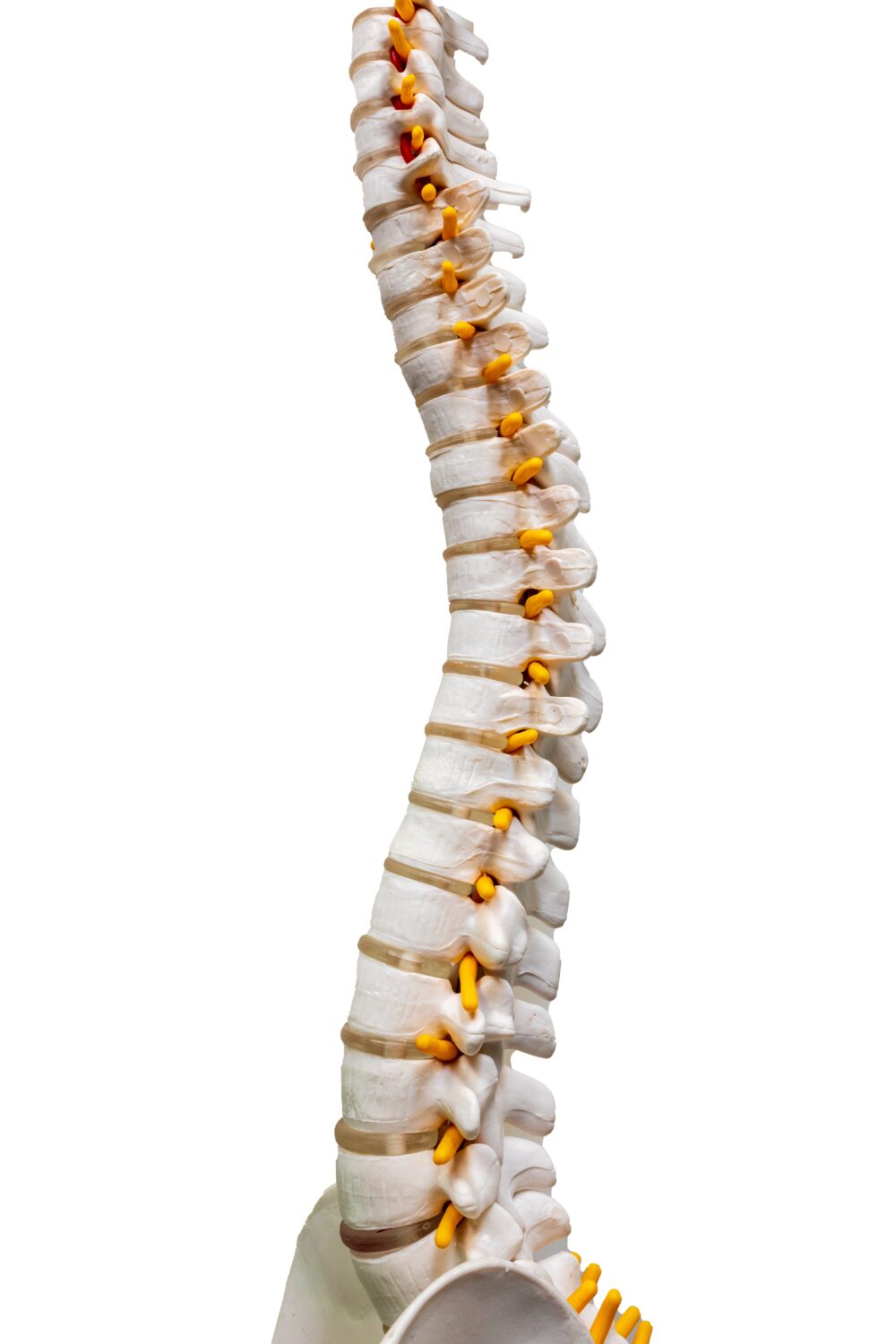
The human spine is a marvel of engineering, designed to support your body’s weight, facilitate movement, and protect the spinal cord. One of its most remarkable features is its natural curves, which play a crucial role in maintaining balance and absorbing the shocks and stresses that your body endures while going about everyday life.
Understanding the importance of your spinal curves can help us appreciate their significance in our overall function and mobility.
The Three Curves
The spine consists of three main curves: cervical (neck), thoracic (upper back), and lumbar (lower back).
The cervical curve includes seven vertebrae and is concave (rounded inward) when viewed from the side. This curve enables us to nod, turn our head, and maintain an upright posture.
Our body’s thoracic curve consists of twelve vertebrae and is convex (rounded outward) and accommodates internal organs and the ribcage. This curve allows an even distribution of forces across the upper back during lifting or twisting motions. It also provides the stability and flexibility required for the “in” and “out” of breathing.
The lumbar curve is made up of five vertebrae and is also concave, like the cervical curve, but is larger due to its role in bearing much of your body weight. This curve acts as a shock absorber during walking or running.
How The Curves Work Together
Together, these three curves create a stretched-out “S” shape, a design that optimizes balance by positioning our body’s center of gravity over our base (our feet). This alignment minimizes energy expenditure and maximizes the efficiency of movement during sitting, standing, and walking.
Dysfunction and Misalignment of Spinal Curves
Maintaining healthy spinal curves is vital because misalignments can lead to postural issues, including muscular imbalances, chronic pain, and limited range of motion. To maintain optimal spinal curvature, it is essential to engage in regular exercise that focuses on core strength and flexibility, as well as adopt ergonomic practices, particularly if you spend long periods sitting.
Poor posture, sedentary lifestyles, injuries, and other stressors can lead to vertebral subluxations (when the vertebrae become twisted or off-kilter).
How Chiropractic Care Can Help Maintain Your Spine’s Natural Curves
Receiving regular chiropractic care via adjustments realigns any subluxations, restores proper spinal curvatures, and alleviates pressure on nerves. The goal of preventative and consistent chiropractic care is to prevent and avoid chronic conditions caused by misalignments, such as headaches, back pain, and issues with daily movement.
Schedule a visit for chiropractic care at Vaida, and let Dr. Lydia keep your spine and its curves aligned and functioning correctly.
